Pinguicula (AKA ‘Butterworts’) Growing Guidelines From Carnivorous Expert Megan Webb
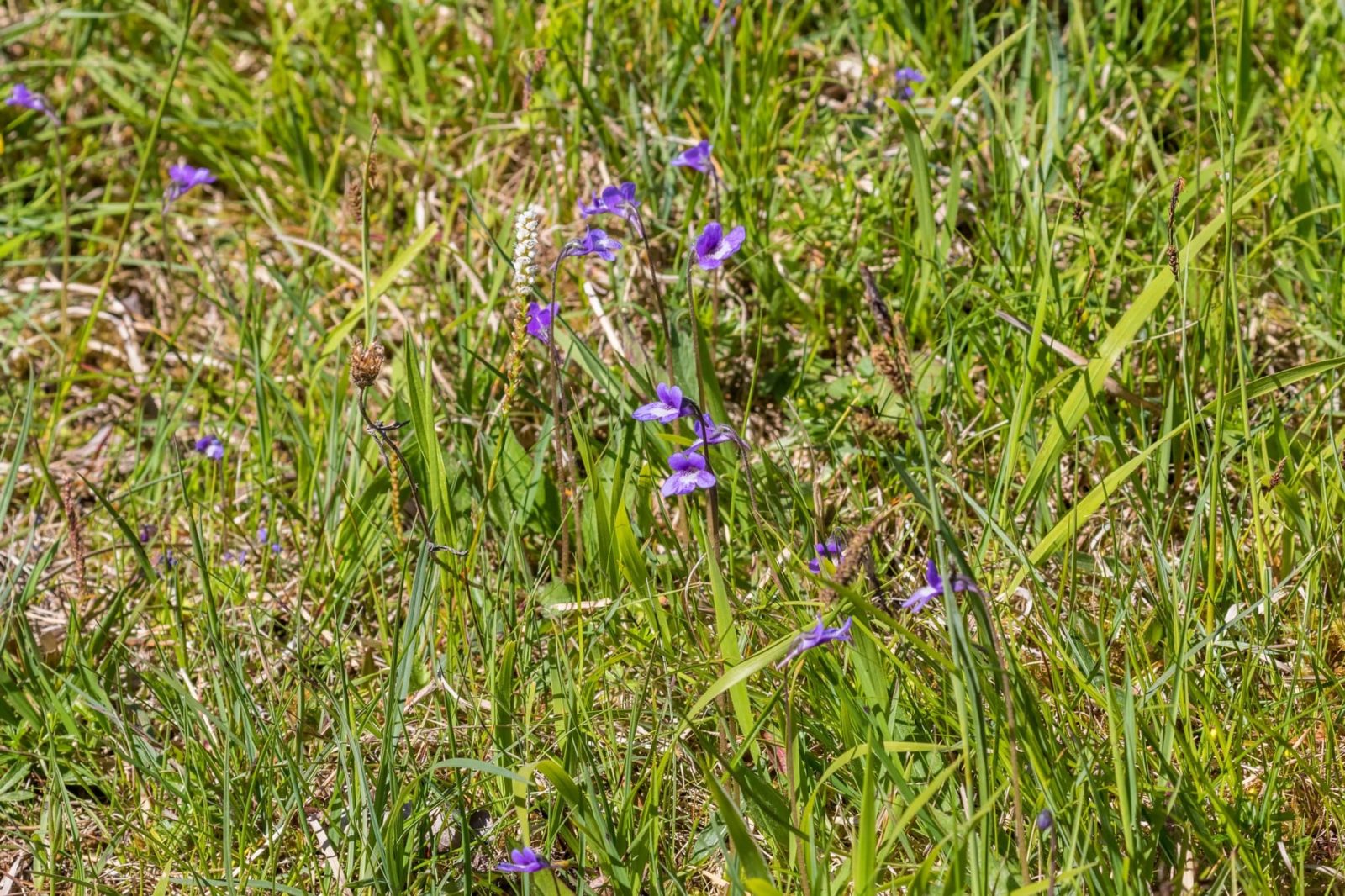
CARNIVOROUS > PINGUICULA

Elizabeth is a Permaculture Garden Designer, Sustainability Consultant and Professional Writer, working as an advocate for positive change. She graduated from the University of St. Andrews with an MA in English and Philosophy and obtained a Diploma in Applied Permaculture Design from the Permaculture Association.
Reviewed By COLIN SKELLY

Colin is a Horticulturist and Horticultural Consultant with experience in a range of practical and managerial roles across heritage, commercial and public horticulture. He holds the Royal Horticultural Society’s Master of Horticulture award and has a particular interest in horticultural ecology and naturalistic planting for habitat and climate resilience.
Contributions From JULIE KIRBY

Julie is the Owner of Triffid Nurseries, a specialist online carnivorous plant nursery. She has previous experience running a successful Gardening Maintenance company for many years and has now branched out to turn her love of growing carnivorous plants into an online business.

Megan Webb has been growing carnivorous plants for more than 10 years; within that time she has collected a huge number of carnivorous plant genera and species. Megan has a BSc (Hons) in Horticulture from Writtle University College and is the winner of both the Aberconwy Award and the Alan Martin Award.

Stephen Studd is an award-winning plant photographer who has been working as a freelancer for over 30 years. Stephen won the RHS Photographer of the Year award in 2011 and his work has been published in Elle, The Guardian and The Times. He is also the Chair of the PGPA and is a committee member of the Garden Media Guild.
PINGUICULA GUIDES
Pinguicula, also known as ‘Butterworts’, are carnivorous plants that are interesting options to add to a carnivorous plant collection.
The sticky, succulent-like leaves on these plants attract and trap the plants’ prey.
“My favourite Carnivorous plants are Butterworts, also known as Pinguicula,” shares Julie Kirby, the owner of Triffid Nurseries.
“This is purely because I find them pretty, as they have a feminine appearance.”
Overview
| Botanical Name | Pinguicula |
| Common Name(s) | Butterworts |
| Plant Type | Carnivorous Houseplant |
| Native Area | Europe, North America, North Asia |
| Hardiness Rating | H1C-H6 |
| Foliage | Succulent-like sticky, plump leaves |
| Flowers | Mostly blue, white or violet |
| When To Plant | Year-Round |
Sunlight
Preferred
Full sun or part shade
Exposure
Sheltered
Size
Height
0 – 0.1M
Spread
0 – 0.1M
Bloom Time
June to August
Soil
Preferred
Sand or clay
Moisture
Moist but well-drained
pH
Acidic or neutral
Pinguicula is a genus of largely perennial carnivorous flowering plants.
There are around 80 species in total, some of which are native to Europe, North America and North Asia.1Pinguicula the Butterworts. (n.d.). Botanical Society of America. Retrieved June 12, 2023, from https://botany.org/home/resources/carnivorous-plants-insectivorous-plants/pinguicula-the-butterworts.html
Forming stemless rosettes, these butterworts vary dramatically in their environmental needs and the climate in which they grow, with both tropical and temperate species available.
Tropical types retain their carnivorous leaves year-round, whilst temperate types can often form hibernacula (slightly closed buds) during their winter dormancy period.2Growing Butterworts. (n.d.). Colorado Carnivorous Plant Society. Retrieved June 12, 2023, from https://coloradocarnivorousplantsociety.com/growing_butterworts.htm
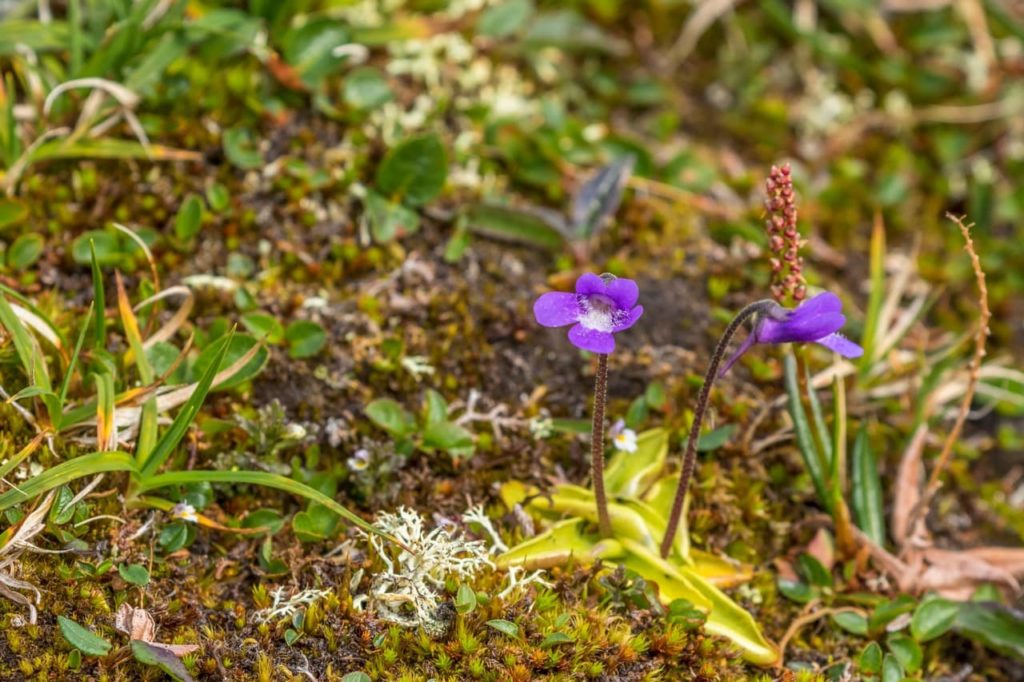
Some types within both categories have different types of leaves that they produce depending on the season.
To catch their prey, these plants exude a sticky substance that traps prey on their leaves, where they can then be digested.
“I have a big thing for photographing carnivorous plants such as butterworts, as their shape and form are fun to examine close up with a macro lens,” shares Garden Photographer Stephen Studd.
Here in the British Isles, UK growers can choose to grow a couple of species that are native to our shores: Pinguicula vulgaris (Common Butterwort) or P. grandiflora (Large-Flowered Butterwort).
Though these two varieties are most commonly grown under glass rather than outside in gardens, they can also be grown outdoors in the right growing conditions and environment.
You can also grow more tender varieties from elsewhere, including popular Mexican varieties, but the native types are obviously hardier than the tropical varieties.
How To Grow Pinguicula
Pinguicula is not necessarily too challenging to grow, but it is important to remember the environmental conditions that this carnivorous plant requires in order to grow it successfully.
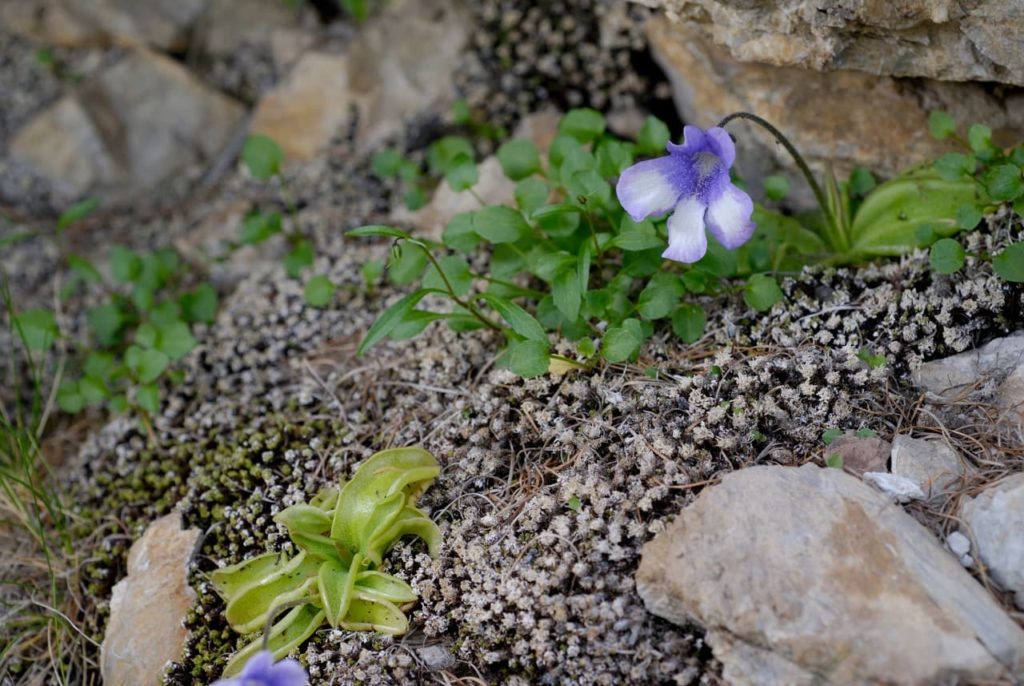
“The belief that growing Carnivorous Plants is hard is a huge misconception,” says Julie.
“In fact, it’s not hard at all if you follow the care advice available from growers like myself.”
Soil Requirements
Like other carnivorous plants, butterworts tend to thrive in low-fertility and acidic soils that are moist yet free-draining or poorly drained (depending on the specific species and variety).
Propagation
Butterworts can often be propagated by sowing seeds as soon as they are ripe.
Sow them onto the surface of the growing medium with some gentle heat from a heat mat or heated propagator.
These seeds need light to germinate.
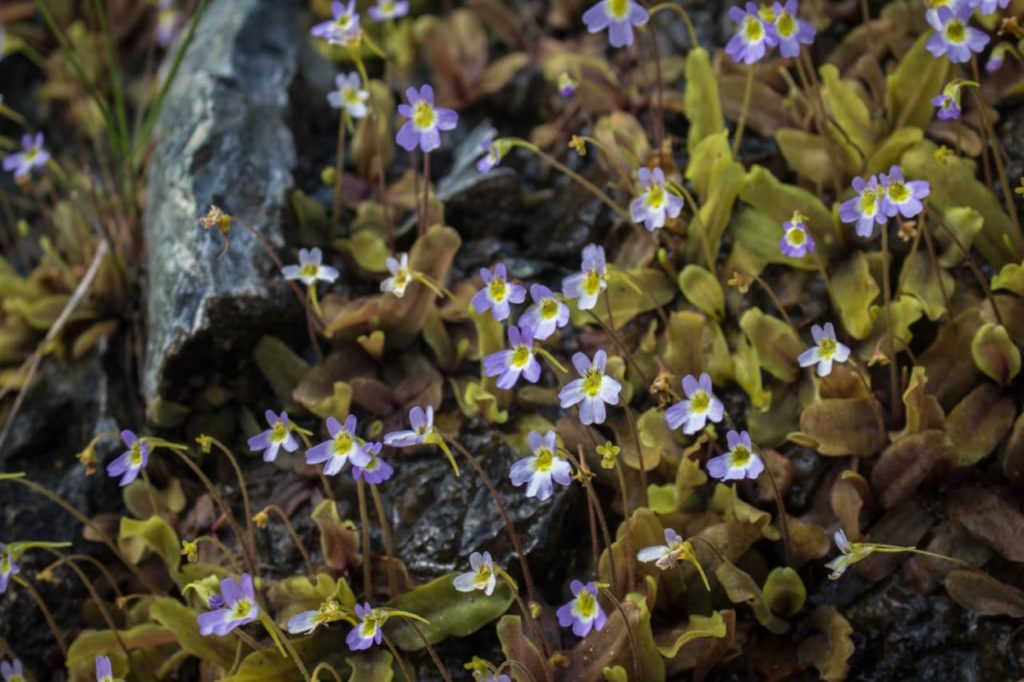
With some varieties, it is also possible to divide dormant buds during the late winter months.
“Many Pinguicula can be propagated from leaf cuttings,” explains Colin Skelly, a Horticultural Consultant.
“Gently tease away the leaf from the stem and place on a pot or tray of 2 parts vermiculite to 1 part perlite, making sure to keep the surface damp but not wet. Small plants should result in 1-2 months.”
Preferred Environment
These plants prefer an environment similar to the climate in which they are found in the wild.
Commonly found in boggy wetland environments, some of the hardier native types might be included in a wetland or bog garden outdoors, in full sun or partial shade.
Usually, growers should aim to mimic the natural environment of these plants as closely as they can while growing butterworts undercover or indoors in pots, where they need bright, filtered light.
Butterwort Care Guidelines
Pinguiculas do not tend to be too challenging to care for over time, but you will need to give some thought – not only to where you position your plants – but also to how you water and otherwise care for them over the course of the year.
Sunlight
As mentioned above, butterworts will usually be grown indoors, where they will require a position in bright but filtered light.
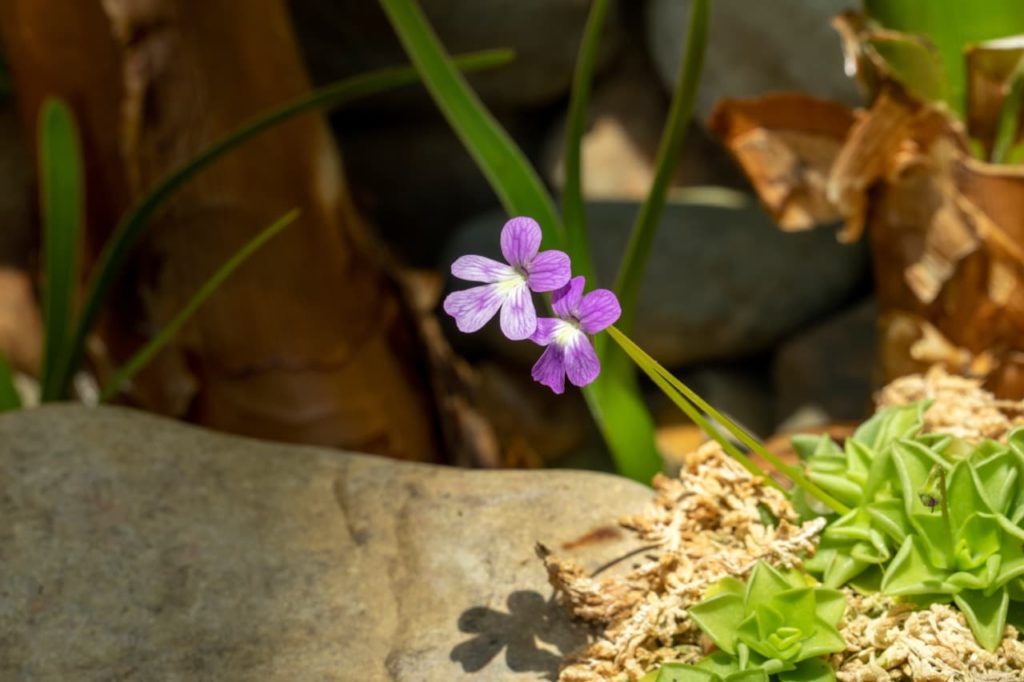
Hardier native types grown outdoors in the UK will typically cope in full sun (as long as the conditions remain consistently moist) or in part shade, but cannot cope with shadier conditions.
Watering
Watering is the most important factor to get right when successfully growing these carnivorous plants.
Make sure you understand the conditions required by the butterwort you are growing, as some like more free-draining conditions than others.
Water from below, placing a saucer filled with water at the base of the plant pots throughout the summer.
Try to use rainwater where possible and filter or boil tap water where it is not.
Feeding
Like other carnivorous plants, butterworts grow in low-fertility environments and do not require any additional feeding.
Overwintering
Tender species will need to be kept free from frost and cold temperatures, as some will not cope if temperatures fall below 5°C.
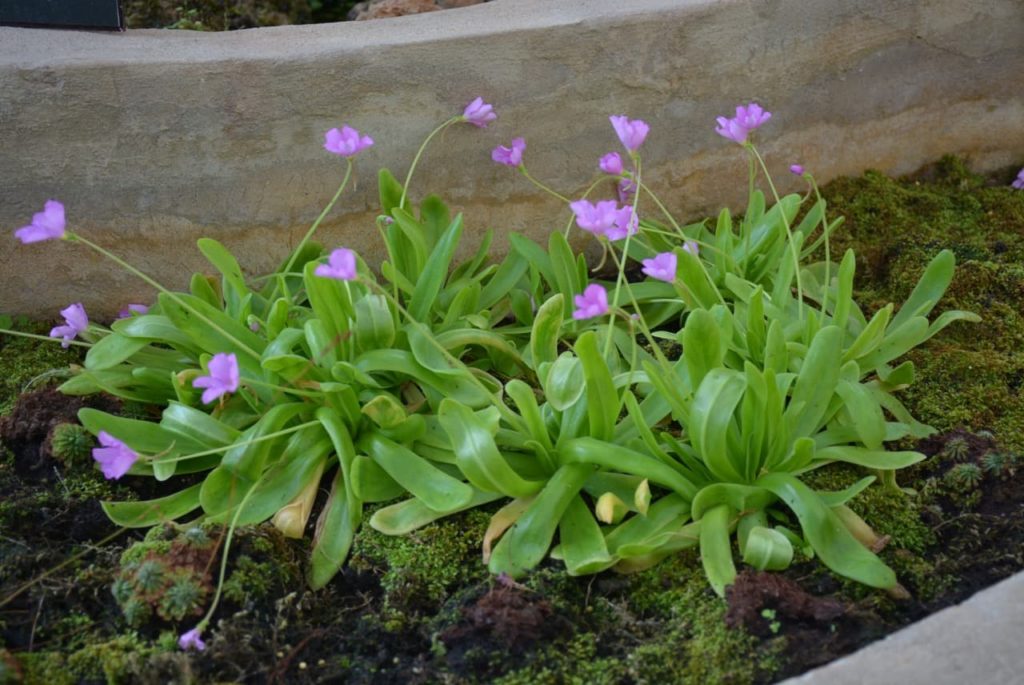
Temperate types cope with cold by entering a period of dormancy over the winter months.
In winter, when temperate butterwort plants go dormant, less water will be required.
At this time of the year, keep the growing medium just damp, but make sure that waterlogging does not occur as this might cause common fungal issues to arise.
Common Problems
Like other carnivorous plants, these are tough little specimens that can generally cope with a lot and they are not particularly prone to pest or disease problems.
However, they can sometimes be bothered by slugs or snails when growing outdoors.
Indoors, problems are typically due to shortcomings in the environmental conditions or care.
References
- 1Pinguicula the Butterworts. (n.d.). Botanical Society of America. Retrieved June 12, 2023, from https://botany.org/home/resources/carnivorous-plants-insectivorous-plants/pinguicula-the-butterworts.html
- 2Growing Butterworts. (n.d.). Colorado Carnivorous Plant Society. Retrieved June 12, 2023, from https://coloradocarnivorousplantsociety.com/growing_butterworts.htm
